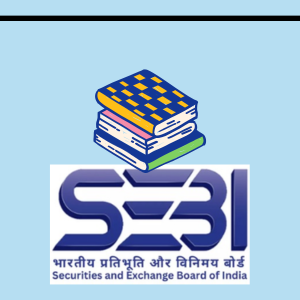
Vakalatnama is a written document submitted before a court by a lawyer/solicitor/advocate/counsel declaring that his clients have authorised him to represent them in a legal proceeding. Vakalatnama is also referred to as a ‘Vakil Patra’ in colloquial terms.
In this article, Team YLCC looks to explore the concept and significance of a Vakalatnama in detail. Read on!
INTRODUCTION TO VAKALATNAMA
Historically, the phrase, ‘Vakalatnama’ had its origin from the notable Urdu language. In Urdu language, Vakalatnama means the power of an attorney. However, over time, the courts have interpreted the term to mean ‘a written document authorising an advocate with a range of legal powers’. On the other hand, Section 1A of The Power Of Attorney Act, 1882 clearly defines the power of attorney as a legal document authorising any person to represent or act on behalf on the person executing it. However, it must be noted that the term does not have any definition in the Code of Civil Procedure, 1908 or the Power of Attorney Act, 1882.
Though in a sense a Vakalatnama is a power-of-attorney, in the matter of construction, courts have drawn a distinction between the two and in the application of the principles of construction, most of the courts while interpreting a power-of-attorney strictly have interpreted a Vakalatnama liberally so as to infer the conferment of large and wide powers on the counsel.
However, the book titled ‘Advanced Law Lexicon’ written by P Ramanatha Aiyar has promptly defined the term Vakalatnama as a Memorandum of appearance which empowers a lawyer to plead before any authority/court/tribunal.
INGREDIENTS OF A VALID VAKALATNAMA
In order for a Vakalatnama to be considered valid in a court of law, it must contain the following information:
- The name of the case/cases for which the Advocate has been appointed
- The date on which the Vakalatnama is being executed
- The name of the court/courts for which the advocate is being appointed
- The name of the person authorising the Advoacate
- Signature of the parties
- The nature of power given to the lawyer
- The Advocate’s address
- Advocate’s signature accepting the Vakalatnama
WHO CAN AUTHORISE A VAKALATNAMA
- Any affected party or aggrieved person can be eligible and authorize to give a vakalatnama.
- Any authorized person can execute the Vakalatnama on behalf of the company, society or body.
- Parents can be authorized as a guardian of the minor children.
- A power of attorney holder of a party, can also eligible to file a vakalatnama.
DETERMINING THE VALIDITY OF A VAKALATNAMA
A Vakalatnama is valid until:
- The death of the client; or
- The demise of the lawyer; or
- The client withdraws it; or
- If A court gives approval for the lawyer to withdraw it; or
- In case of conclusion of the court case
SIGNIFICANCE OF A VAKALATNAMA
Among other information, the Vakalatnama is testament to the following undertakings:
- The client will agree to advocate’s decision which is done on behalf of a client.
- Regardless of the outcome of such decision, client shall not hold the advocate responsible.
- The client is willing to accept all charges or costs of all legal proceedings.
- The advocate has the right to keep all the documents until complete fees not paid by the client.
- If during the trial client wants to change his lawyer he has the right to do so.
- The lawyer has the right to take all the decisions for the beneficiary purpose of the client.
In the case of Baru Singh (deceased by L.R.) and others vs. Babu Ram Sharm, (AIR 1997 ALL 185), the Allahabad High Court held that for the performance of legal work such as giving opinion, sending notices, drafting petitions or other documents, signed Vakalatnama need not be obtained by lawyer from his client. However, signed Vakalatnama is required to be obtained when it is filed in Courts or Tribunals to enable the lawyer to plead cases on behalf of clients.
Previously, a Vakalatnama did not require a fee. However, currently, the rules of the Delhi High Court require that the applicants should pay INR 10/- on what is termed as an Advocate Welfare Stamp which should be duly attached on the Vakalatnama.
HOW TO REVOKE A VAKALATNAMA
If a client wishes to revoke/cancel/withdraw the Vakalatnama given to his or her advocate, he or she may:
- Write a letter/email to the previous advocate mentioning that you wish to cancel the Vakalatnama.
- Ensure the letter/email is delivered to the advocate and he/she acknowledges receipt of the letter or email.
- The Vakalatnama becomes invalid once the Advocate acknowledges the receipt of the letter of E-mail.
- Send a copy of the same letter to one’s new advocate.
- Inform the Court by filing a copy of the same letter for proper documentation.
- The copy of the letter must have your original signature.
- Issue a new Vakalatnama to the new Advocate so he or she is able to represent you in court.
- The new Vakalatnama also has to be filed in court for proper record-keeping.
SUPREME COURT REGULATIONS ON VAKALATNAMA
In a recent case, the Supreme Court has clearly stated:
We may take judicial notice of the following defects routinely found in Vakalatnamas filed in courts :-
(a) Failure to mention the name/s of the person/s executing the Vakalatnama, and leaving the relevant column blank;
(b) Failure to disclose the name, designation or authority of the person executing the Vakalatnama on behalf of the grantor (where the Vakalatnama is signed on behalf of a company, society or body) by either affixing a seal or by mentioning the name and designation below the signature of the executant (and failure to annex a copy of such authority with the Vakalatnama).
(c) Failure on the part of the pleader in whose favour the Vakalatnama is executed, to sign it in token of its acceptance.
(d) Failure to identify the person executing the Vakalatnama or failure to certify that the pleader has satisfied himself about the due execution of the Vakalatnama.
(e) Failure to mention the address of the pleader for purpose of service (in particular in cases of outstation counsel).
(f) Where the Vakalatnama is executed by someone for self and on behalf of someone else, failure to mention the fact that it is being so executed. For example, when a father and the minor children are parties, invariably there is a single signature of the father alone in the Vakalatnama without any endorsement/statement that the signature is for ‘self and as guardian of his minor children’. Similarly, where a firm and its partner, or a company and its Director, or a Trust and its trustee, or an organisation and its office-bearer, execute a Vakalatnama, invariably there will be only one signature without even an endorsement that the signature is both in his/her personal capacity and as the person authorized to sign on behalf of the corporate body/firm/ society/organisation.
(g) Where the Vakalatnama is executed by a power-of- attorney holder of a party, failure to disclose that it is being executed by an Attorney-holder and failure to annex a copy of the power of attorney;
(h) Where several persons sign a single vakalatnama, failure to affix the signatures seriatim, without mentioning their serial numbers or names in brackets. (Many a time it is not possible to know who have signed the Vakalatnama where the signatures are illegible scrawls);
(i) Pleaders engaged by a client, in turn, executing vakalatnamas in favour of other pleaders for appearing in the same matter or for filing an appeal or revision. (It is not uncommon in some areas for mofussil lawyers to obtain signature of a litigant on a vakalatnama and come to the seat of the High Court, and engage a pleader for appearance in a higher court and execute a Vakalatnama in favour of such pleader).
We have referred to the above routine defects, as Registries/ Offices do not verify the Vakalatnamas with the care and caution they deserve. Such failure many a time leads to avoidable complications at later stages, as in the present case. The need to issue appropriate instructions to the Registries/Offices to properly check and verify the Vakalatnamas filed requires emphasis.
Needless to say, the Vakalatnama is considered an extremely important legal document that lends legitimacy to the relationship between the client and his or her counsel. As such, proper care must be taken to draft this carefully in order to future complications.
YLCC would like to thank its Content Team for their valuable insights in this article.






